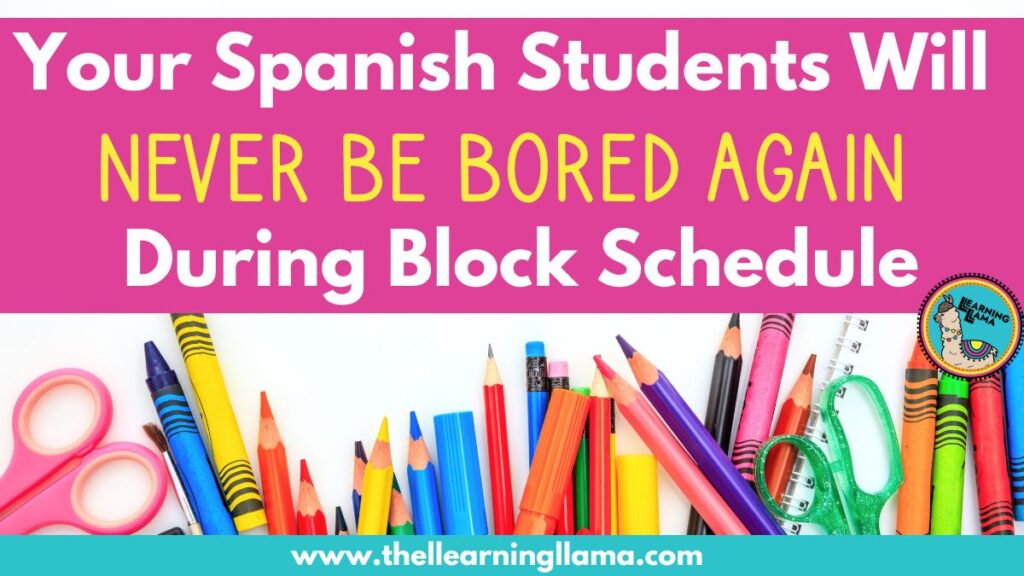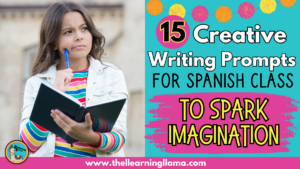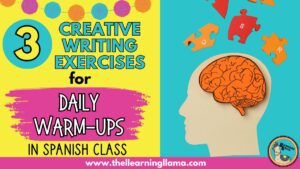A typical block schedule is anywhere from 80-90 minutes. During my first year of teaching, I started in a traditional 8-period per day schedule. Classes were roughly 40 minutes; so when I transitioned to a block schedule for my second year, I was not sure how I would keep my students engaged for double that amount of time.
Fast forward to my current teaching position and I’m back to 40-50 minute class periods, and I find myself missing the block schedule. Keep reading to find out why and to see two block schedule sample lesson plans!
Benefits of Block Schedule
I thought I would hate the block schedule. Seeing my students every other day, teaching for nearly 1 ½ hours, not getting a bathroom break, etc. But, I would actually prefer all classes to be 80-90 minutes.
More Time to Dive Deeper
The main reason… you have time to dive into your lessons rather than gloss over, rush through, or extend the lesson until the next day. If you’re reading a text, you can read it, interpret it, and even discuss it all in one class period! You want to have a socratic seminar, well now you don’t have to rush your students in a lively debate. Or maybe you have a set of five stations set up, now students don’t have to pick just three stations; they can complete all five!
Bell Ringers and Exit Tickets Are Not Rushed
A second benefit is that bell ringers and exit tickets are not rushed. Teachers usually feel required to add these into their lessons, but with only 40 minutes, there goes 10, and you’re down to a 30-minute lesson. In a block schedule, your bell ringers and exit tickets can be true extensions of the lesson, and sometimes they can be a life-saver! On those days when you have an extra 10 minutes and you already got through your entire lesson, an exit ticket can be extended or elaborated upon to eat up those last 10 minutes of class in a thoughtful, meaningful way. Rather than have students race through their exit ticket, barely taking time to reflect on their learning, now your students have dedicated time to devote to reflection, which is an important step in the learning process.
Time for All 3 Modes of Communication
Another benefit of more time is that you can touch on all 3 modes of communication in one lesson. You can read, write, and speak about the same topic without being rushed or skimping on one of the modes. Try to devote some time to each of the modes during each block. This will give students the opportunity to really develop all of the skills and it is a nice change of pace to switch things up throughout the class.
Learn more about presentational, interpersonal, and interpretive modes and what activities you can do for each.
Bell Ringers and Exit Tickets
Now that you have time to add these into your lessons, what should you do? The obvious answer is to review the material from the previous class or check for understanding from today’s lesson. Of course, I do that all the time! I even had my students keep a notebook and they were required to write down their responses to both. Then, I did a notebook check every marking period for a participation grade.
If you want to use this time to add in more culture and topics that you don’t get to cover during your curriculum, here are some ideas:
- One Fact a Day – share fun facts about Spanish-speaking countries and have them complete a worksheet or exit slip
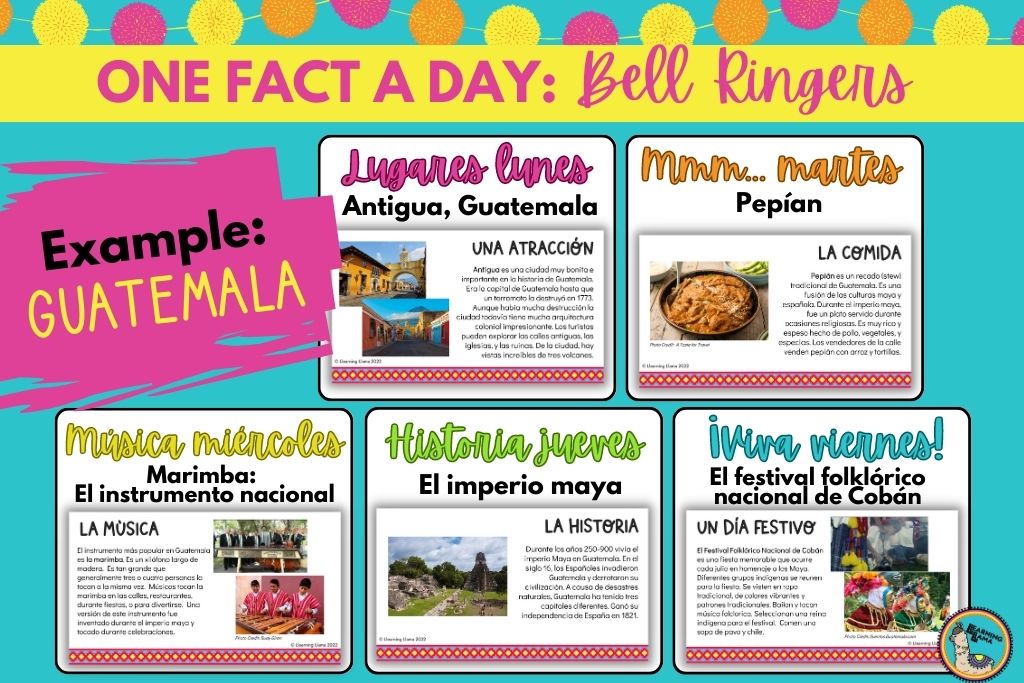
- Quotes and Lyrics – share a short quote or song lyric in the target language and let students interpret it
- Social Emotional Learning – Who says the entire class has to be focused on content? Get to know your students and see how they are doing. I use one set of images to check in at the beginning of the class – here’s how!
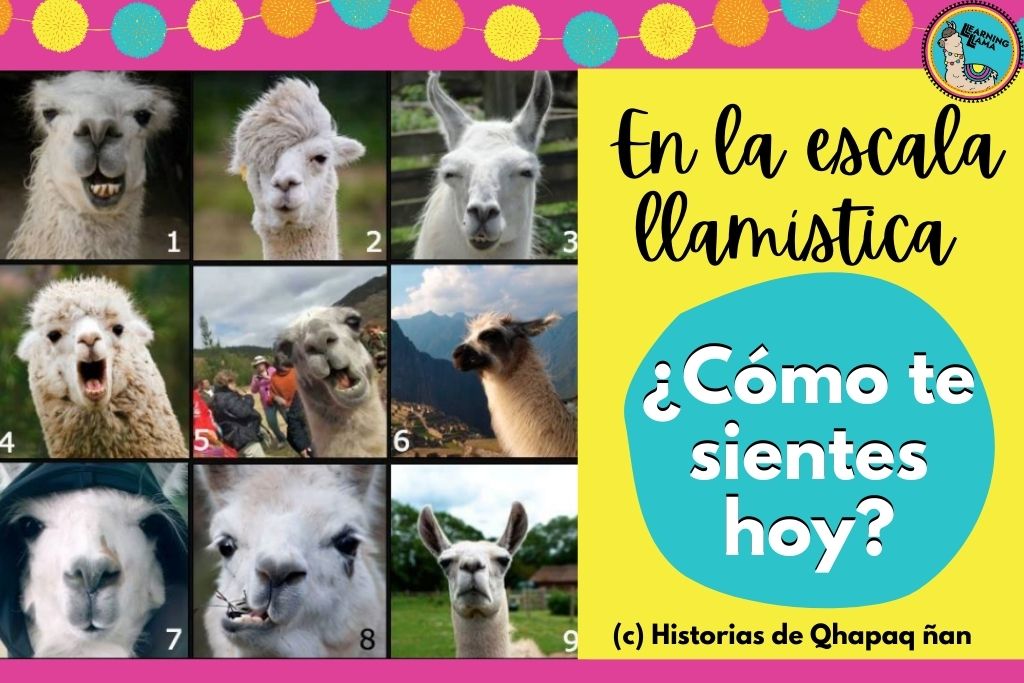
Get them moving
Sitting in one seat for 90 minutes is bound to make your students sleepy and bored. At least once during that time, make sure your students are up and moving. They need a physical break from sitting so their minds and bodies are more alert. Here are 5 quick ideas to get students moving:
Gallery Walks
Use large white boards, post-its, or posters to have students circulate through the room and share ideas. You could even switch up interpretive activities by posting the text around the room or a simple comprehension question lesson by posting the questions around the room instead of on a worksheet.
Speed Dating
Students form two lines, facing one another. As you ask questions about the lesson, they talk to the person across from them, and then one line rotates so they get a new partner.
Partner Cards
Even for a quick movement break, students can find a new partner. Pass out group cards or partner cards, like these below. Students will get to walk around the room to find their partner.
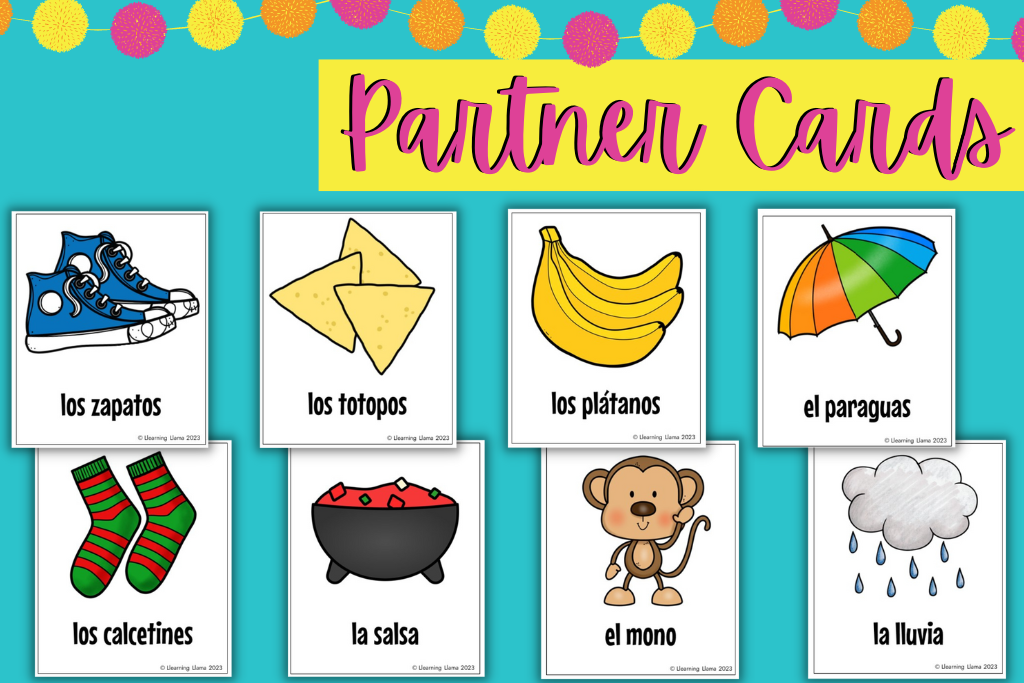
Brain Breaks
Depending on the grade level you teach, you will have to find brain breaks that your students will enjoy. High schoolers don’t love the idea of dancing, but a quick challenge against a friend might liven their spirits. Here is a list of Spanish break breaks from Spanish Mama.
Scavenger Hunts
No matter what content you are teaching, post images around the room and give students a list of things to find or questions to answer about the images. My favorite lesson I taught was a Frida Kahlo scavenger hunt where I posted her paintings around the room and students had to count how many moons they saw or identify in which painting there was a deer. You can use this for anything:
Focus on one text for the entire block
Whether it be a text or a video, you can center one entire block around that one text. You’ll have enough time to delve into the vocabulary, the text, and even discussions. Or, you could extend it over a series of blocks depending on the length of the text. Here are my tips that work for any text, but especially with a short text that can be read within one-block. Take for example a one-page biography or a tourist document or a short story.
Pre-Reading Strategies
Introduce the vocabulary to your students with any typical vocabulary activity. Taboo, 4 corners (free worksheet), assigning each group a few words to present to the class, writing sentences, etc.
Brainstorm
Use the vocabulary words and the title of the text to have students brainstorm what they think the text will be about. Each group can draw their prediction or write a short description to present to the class. I recommend having them draw on large white boards, like these $10 steals from Home Depot!
Annotate the Text
With a block period, you have more time to devote to reading the text, rather than racing through it. Have your students annotate the text with these free annotation symbol bookmarks and learn how I use them here.
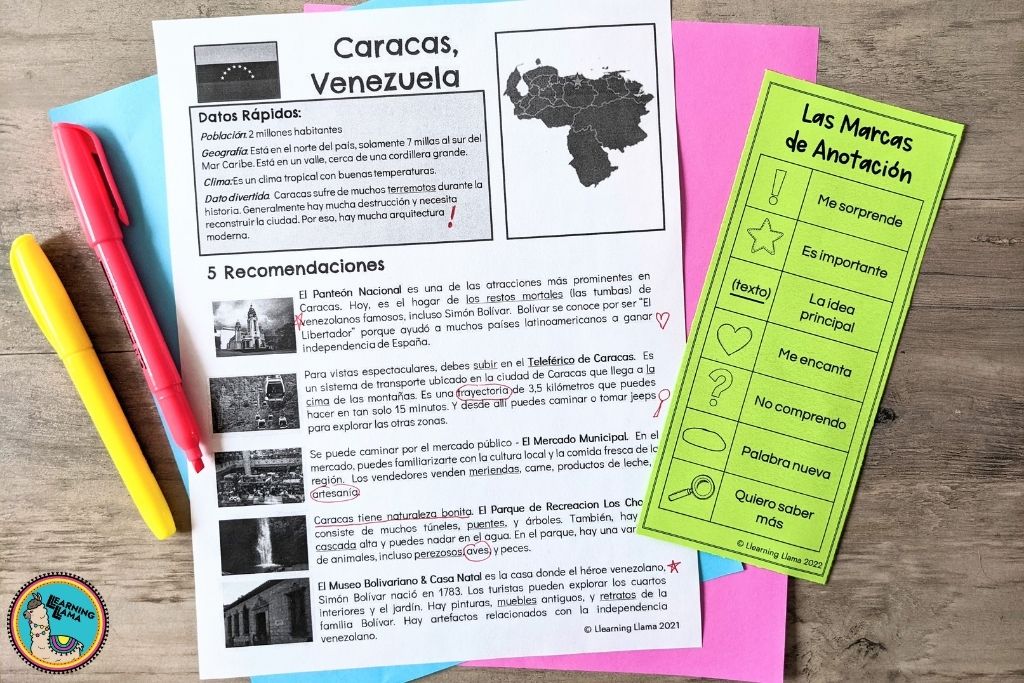
Post-Reading Strategies
Retell the story, write a new ending, answer comprehension questions, have a discussion, etc. Anything to extend the text and now have students work on presentational and interpersonal skills is best!
Free Voluntary Reading
I think we all want to instill a love of reading and learning in our students. Free Voluntary Reading is a great way to do this. With a block schedule, you can devote 10-15 minutes to this. Students choose a text that interests them, and they silently read for that amount of time. Keep students accountable by having them fill out a reading review card. Grab your free set of cards here.
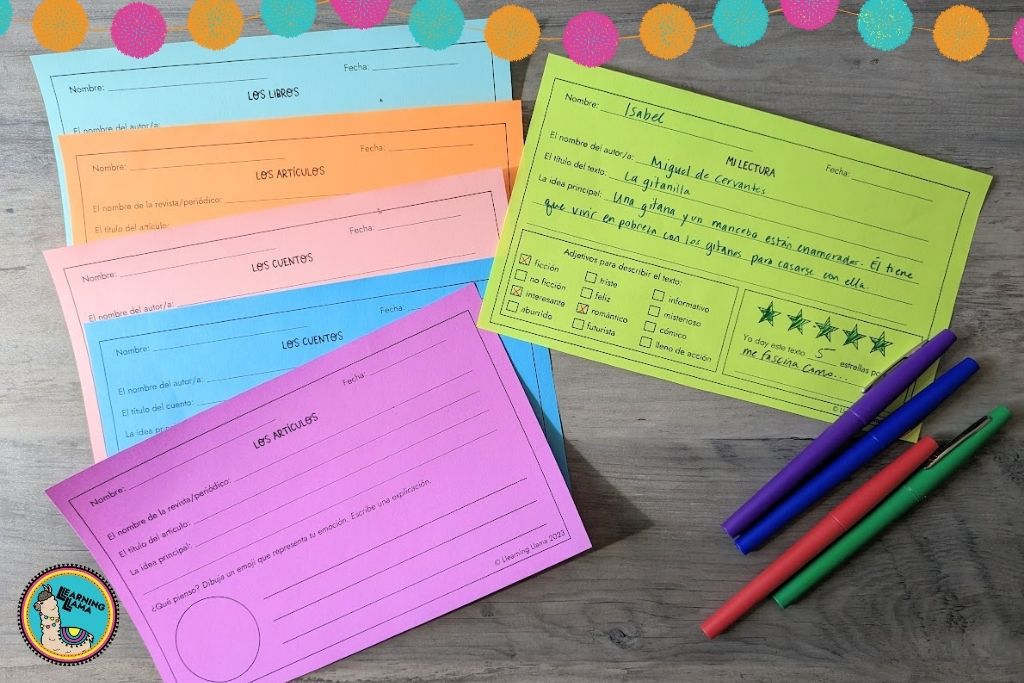
Sample Block Schedule Lesson Plans
This sample block schedule lesson plan can be used in any level of Spanish class learning about cause and effect. You just need to modify the text you read to fit your current content area.
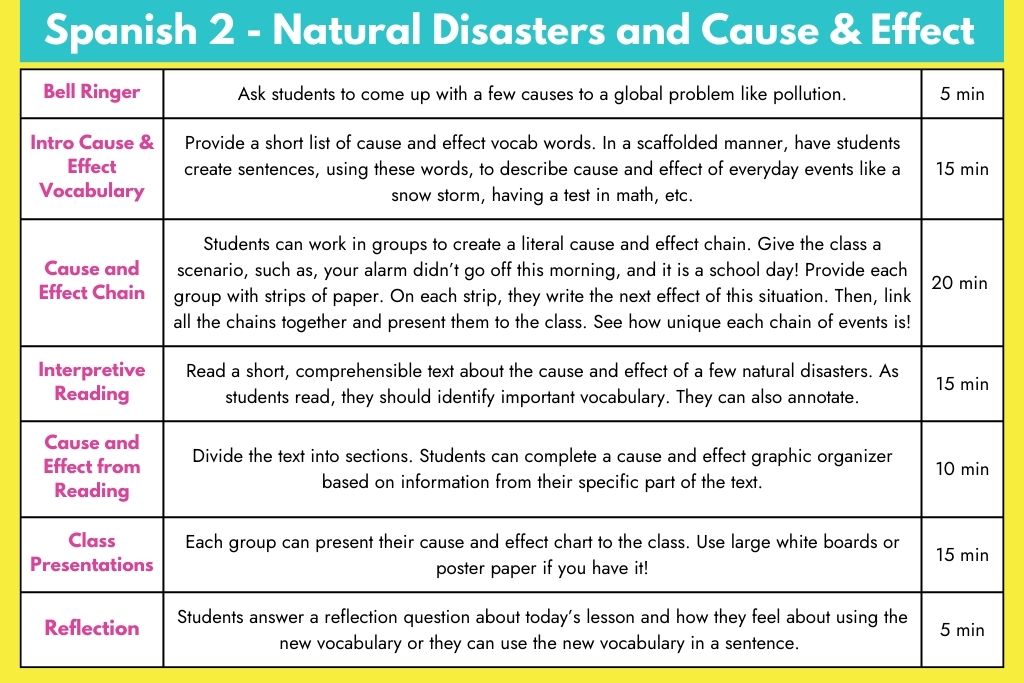
This next sample lesson plan comes from my Frida Kahlo unit. This is day 2, after students were already introduced to Frida Kahlo by reading a biography and doing some research on her life.
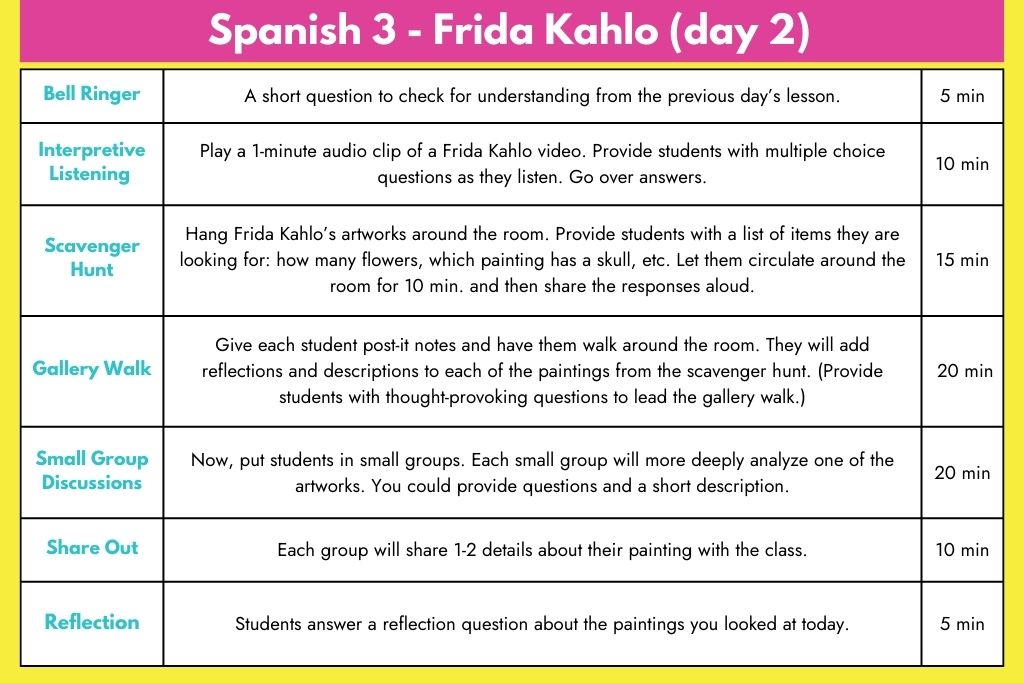
I hope this helps those of you transitioning to a block schedule! Or gives some new ideas to you if you’ve been teaching on a block schedule, but need some inspiration.

